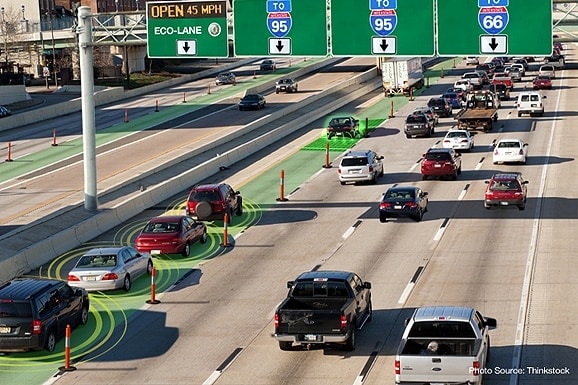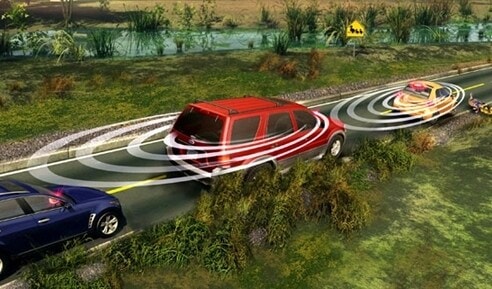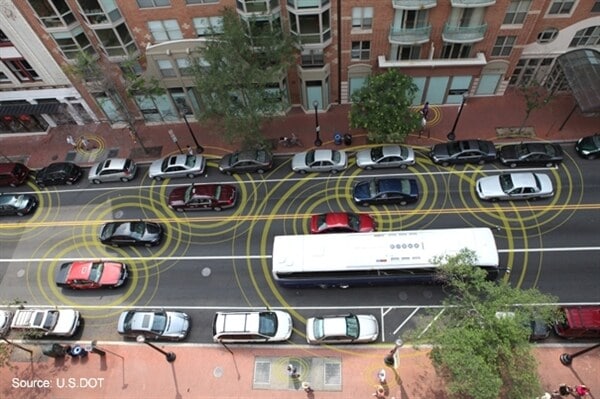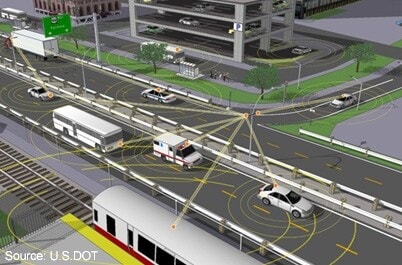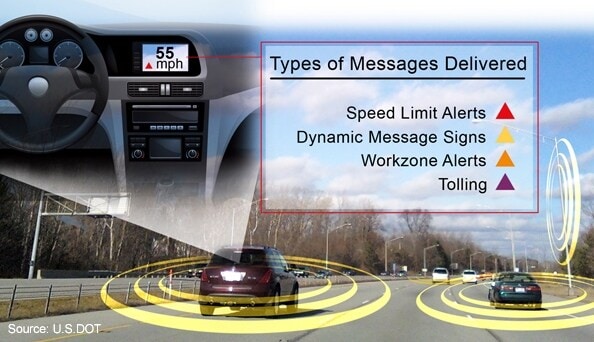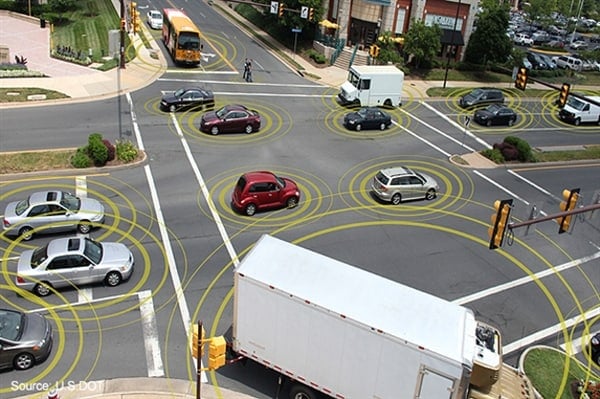The National Highway Traffic Safety Administration (NHTSA) has begun working on regulations that would require manufacturers to equip all new cars with technology that will enable vehicle-to-vehicle communication in a bid to improve safety. "Keeping drivers safe is the most important advantage of V2V (vehicle to vehicle communication)," said NHTSA Administrator Anthony Foxx in making the announcement. "V2V can also help reduce congestion and save fuel. The potential of this technology is absolutely enormous."
Also: 10 Best Luxury Cars Under $40,000
While there is no specific timetable, the goal of the regulations is to develop a standard wireless chip that will enable cars to communicate with each other over a special wireless frequency called Dedicated Short-Range Communications (DSRC). Vehicles equipped with DSRC would transmit data including its direction, speed and position in all directions and would be able to receive similar input from other cars using the technology. The information could be used to warn drivers of possible collisions and even in some cases enable the car to automatically brake to prevent a crash. Although DSRC could provide the basis for autonomously driven cars, the system is viewed more as a safety measure for conventional automobiles as the technology can be retrofitted to existing cars.
Some manufacturers have announced that they will begin rolling out DSRC as soon as 2015 in Europe on a voluntary basis and according to a study from London-based ABI Research cited by Automotive News, the technology could grow from being in 10 percent of new vehicles in 2018 to 70 percent by 2027.
The DSRC technology could also be expanded to pick up signals from cell phones carried by pedestrians and cyclists as well in non-DSRC equipped cars to help minimize the risk of collisions. Scott Belcher, president of the Intelligent Transportation Society of America welcomed the NHTSA announcement, saying that "While the auto industry has made great strides to reduce fatalities and injuries after a crash, the next giant leap is to enable real-time communication between vehicles and with the world around them so crashes can be avoided in the first place."
Also: 2014 Compact Cars at a glance
It’s also reported that the new wireless frequency could be used to automatically collect tolls or measure how much cars are driven in order to tax the vehicles on the basis of miles rather than through motor fuel levies. There are also concerns that the new technology could present some privacy and security issues, leaving the cars vulnerable to hacking.
Popular at KBB.com
10 Best Sedans Under $25,000
12 Compact Cars for 2014
10 Best Luxury Cars Under $40,000
